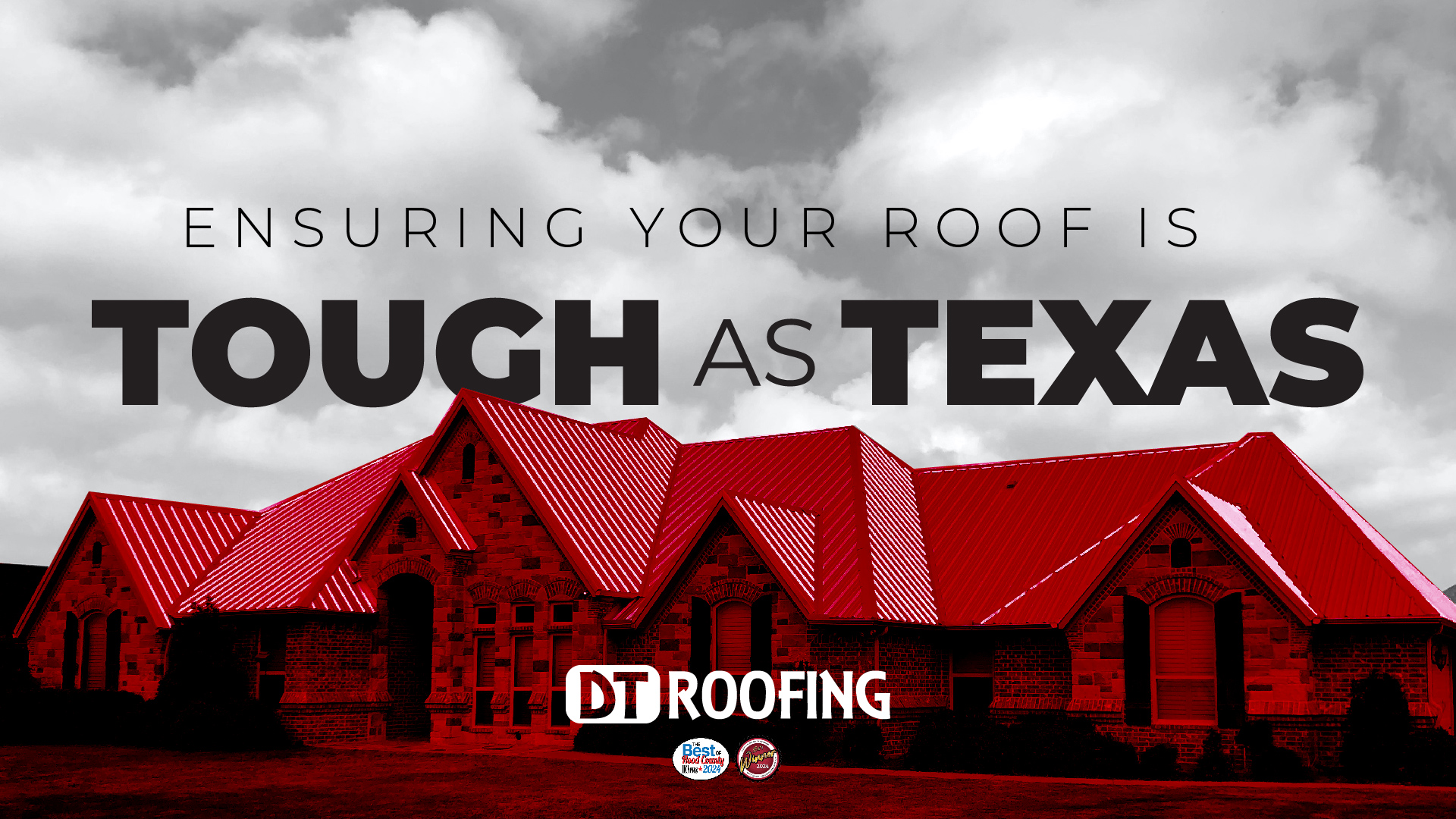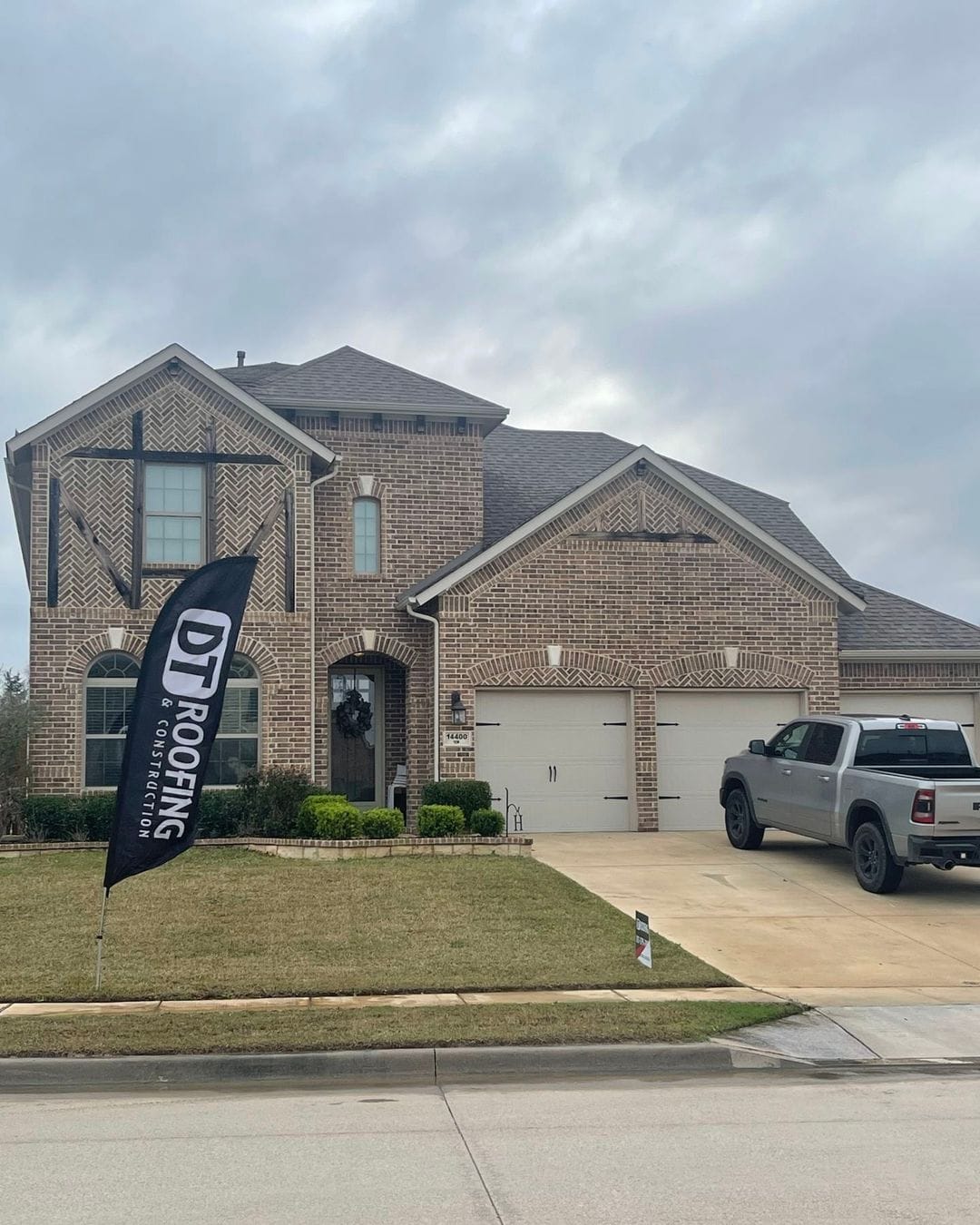
Roof Repair Claims: How the Insurance Process Works
Dealing with roof damage is stressful enough—but trying to navigate the insurance claims process on top of that can quickly become overwhelming for many homeowners. In Weatherford, TX, where hailstorms, wind damage, and other weather-related incidents are all too common, understanding how the insurance process works for roof repair can save you time, money, and frustration.
Many homeowners are unsure of what’s covered, how to file a claim properly, or what their responsibilities are in terms of inspections and paperwork. That’s why it’s important to be prepared before you ever need to file. In this guide, we’ll walk you through the roof insurance claim process from start to finish, and show you how working with a trusted contractor like DT Roofing can make the experience smoother and far more successful.
Step One: Recognize the Damage and Act Quickly
After a major storm or wind event, it’s important to inspect your property for visible signs of roof damage. This can include missing shingles, cracked or dented surfaces, broken flashing, or visible leaks in your ceiling or attic. Some types of damage—like granule loss or minor lifting—might not be obvious from the ground but can lead to much bigger issues if left unchecked.
Prompt action is essential. Insurance companies typically have time limits for filing claims after storm damage. Waiting too long can result in your claim being denied due to delayed reporting.
Even if you’re unsure whether your roof is damaged, scheduling a professional inspection with a reputable local roofer like DT Roofing can give you the documentation and peace of mind needed to move forward.
Step Two: Schedule a Professional Roof Inspection
Before you file a claim, it’s best to get a thorough inspection from a licensed contractor. They can assess the extent of the damage, identify issues that may not be visible from the ground, and determine whether the condition of the roof warrants a repair or full replacement.
A contractor with experience in the insurance claims process will also provide you with detailed photos, a written damage report, and an honest recommendation on whether filing a claim is the right move based on your policy and deductible.
DT Roofing has worked with countless homeowners in Weatherford and understands what insurance adjusters are looking for when evaluating roof damage. Their team helps ensure your documentation is clear, accurate, and supports your claim effectively.
Step Three: Contact Your Insurance Company
Once you have verified damage and supporting documentation, the next step is to contact your homeowner’s insurance provider. Let them know you’ve had a professional inspection and that you’re filing a claim for roof damage. They will assign a claims adjuster who will set up a time to inspect your property.
It’s important that your roofing contractor is present during this inspection to advocate for your needs. Having a professional on site ensures that no damage is overlooked and that all necessary repair work is fully documented and included in the claim estimate.
Step Four: The Adjuster’s Estimate and Approval
The insurance adjuster will assess the damage and provide their own estimate of repair or replacement costs. This is where working with a contractor who understands the process can make a big difference. If the adjuster’s estimate falls short of what’s actually required, your roofer can provide a line-by-line comparison and supplement the claim with additional documentation.
At this stage, your claim will be either approved, partially approved, or denied based on the findings. If approved, the insurance company will issue the first check—called the Actual Cash Value (ACV)—which represents the depreciated value of your roof based on age and condition.
Once the work is completed and documented, a second payment—called the Recoverable Depreciation—is released, bringing your total payout closer to the full replacement cost, minus your deductible.
Step Five: Completing the Roof Repairs
Once your insurance payout is confirmed, you can schedule the roof repairs or replacement. At this point, it’s critical to use a contractor with experience working under insurance guidelines to ensure the work is completed to the scope defined in the claim.
DT Roofing uses high-quality materials from trusted manufacturers like Owens Corning, ensuring the new roofing system meets or exceeds your previous roof’s performance. Their team communicates directly with the insurance provider if any hidden damage or discrepancies arise during construction, ensuring that the claim is adjusted if necessary.
Step Six: Final Inspection and Documentation
After the repairs are complete, your contractor will perform a final inspection to ensure everything is done to standard. They will provide documentation of the completed work and help you submit any final paperwork needed to release the recoverable depreciation.
In most cases, your insurance company will close the claim once they receive the final invoice and photos. Be sure to save all documents and receipts for your records.
Avoiding Common Pitfalls
Filing a roof repair claim can be straightforward—but there are a few common mistakes that homeowners should avoid:
- Delaying the inspection or claim: Time matters. Waiting too long after damage occurs can result in denied coverage.
- Failing to review your policy: Know what your policy covers and what your deductible is. Some policies have exclusions or higher deductibles for wind and hail.
- Choosing the wrong contractor: Some roofers don’t understand the claims process or fail to show up during the adjuster’s inspection, leaving you without representation.
- Agreeing to “no deductible” scams: Contractors who claim they can waive your deductible may be committing insurance fraud. It’s illegal in Texas and can get you into serious trouble.
Final Thoughts
Roof insurance claims can be complicated, but they don’t have to be stressful. With the right contractor by your side and a solid understanding of the process, you can secure the repairs your home needs—without headaches or costly surprises.
If you live in Weatherford, TX and suspect roof damage, don’t wait. Call DT Roofing for a professional inspection, expert guidance, and high-quality service every step of the way. They’ll help you protect your home, your finances, and your peace of mind—no matter what the Texas weather brings.
Read also our blog: Preventative Roof Care Tips for Homeowners












